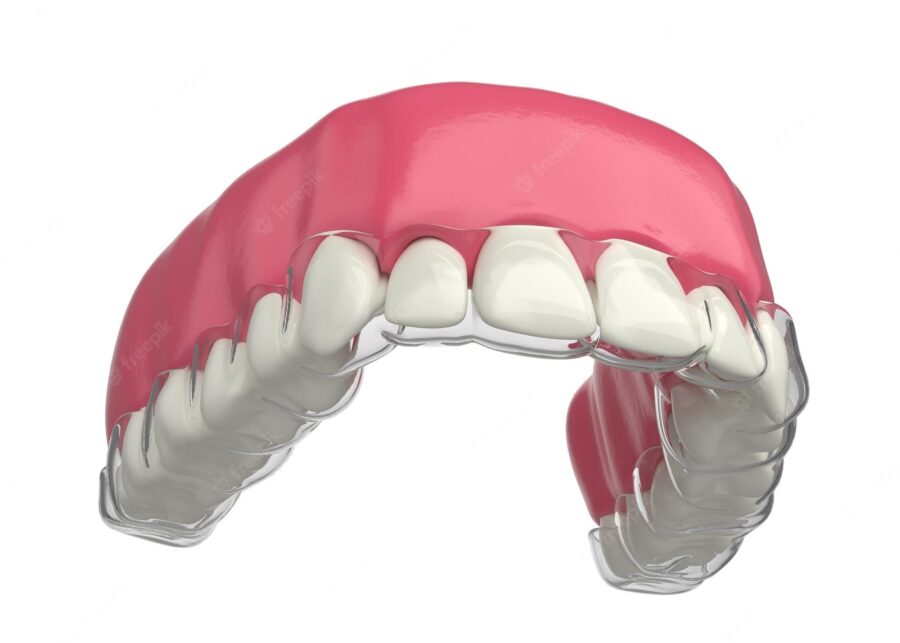Orthodontic braces are an age-old mystery to many people. When asked what braces do and how they work, many people can only guess. It’s time to unravel the mystery and explore the different types of orthodontic braces and how they work. Braces can be metal, ceramic, or lingual, and each type has its own benefits and drawbacks. We’ll take a look at how these braces work and how they can be used to improve your smile. We’ll also discuss how long each type of brace typically takes to work and the different types of treatments available. By the end, you’ll have a better understanding of the different types of orthodontic braces and how they can help you achieve the smile you’ve always wanted.
What are Orthodontic Braces?
Orthodontic braces are orthodontic appliances used to correct misalignment of the teeth and jaws. They use tension and pressure to move teeth into the desired position. The braces are typically made of metal or ceramic, but there are also lingual braces that are placed behind the teeth instead of on the front. Braces work by applying gentle force to the teeth to move them into the correct position.
Orthodontic braces have long been a topic of curiosity and intrigue for many people. The thought of wearing braces can evoke a mix of emotions, from excitement about achieving a straighter smile to concerns about the process and potential discomfort. In this video, we aim to demystify orthodontic braces and shed light on the journey to a beautiful, aligned smile.
When it comes to braces, there are a few different types to choose from. The type of brace you choose will depend on what type of misalignment you have and what kind of results you want. Your orthodontist will be able to help you decide which type of brace is right for you.
Types of Orthodontic Braces
Metal braces are made of stainless steel and are the most visible type of braces. They are also the most affordable type of braces. Metal braces use brackets, wires, and elastics to move the teeth into the desired position. These are the most common and recognisable type. While metal braces are highly effective, they are also the most visible option.
Ceramic braces are made of a clear material and are less visible than metal braces. They use the same brackets and wires as metal braces, but the brackets are made of a clear material. Ceramic braces are more expensive than metal braces, but they are less noticeable. This makes them less noticeable compared to metal braces, making them a popular choice for those who desire a more discreet treatment option.
Lingual braces are the least visible type of braces. They are placed behind the teeth instead of on the front and are almost invisible. Lingual braces use the same brackets and wires as metal and ceramic braces, but they are customised to fit the shape of the teeth. They are more expensive than metal and ceramic braces, but they are much less noticeable.
Clear Aligners: Clear aligners, such as Invisalign, are a popular choice for those seeking a nearly invisible orthodontic treatment. These custom-made, removable aligners gradually shift the teeth into their desired position. They offer the flexibility of removing the aligners for eating and oral hygiene.
Benefits and Drawbacks of Each Type
Metal braces are the most affordable type of braces, but they are also the most visible. They are best for correcting severe misalignment and may be the only option for some people. They are also the most durable type of braces and can withstand the most force.
Ceramic ones are less visible than metal braces, but they are more expensive and less durable. They are best for mild to moderate misalignment and are a good choice for people who want a less visible option.
Lingual braces are the least visible type of braces, but they are also the most expensive and the least durable. They are best for mild misalignment and are a good choice for people who want an invisible option.
How Orthodontic Braces Work?
Orthodontic braces work by applying gentle force to the teeth to move them into the desired position. The force is applied by the brackets, wires, and elastics that are attached to the braces. The brackets are made of metal, ceramic, or a clear material and are attached to the front of the teeth. The wires are threaded through the brackets and connected to the elastics, which create tension and pressure on the teeth to move them into the desired position.
The treatment process typically takes anywhere from six months to two years, depending on the severity of the misalignment. During the treatment process, your orthodontist will adjust the braces to create more tension and pressure on the teeth. As the teeth move into the desired position, the braces will be adjusted to maintain the tension and pressure.
How long does it take for Orthodontic Braces results?
The amount of time it takes for orthodontic braces to work depends on the severity of the misalignment and the type of braces being used. For mild misalignment, braces can typically be removed within six months to a year. For moderate to severe misalignment, braces can take up to two years to be removed.
During the treatment process, it is important to follow the instructions of your orthodontist. Braces should be adjusted regularly to maintain the tension and pressure on the teeth. If the braces are not adjusted properly, it could result in an extended treatment time or a less-than-ideal result.
Different Types of Orthodontic Treatments

Invisalign is a popular treatment for mild misalignment. It uses clear plastic aligners that fit over the teeth and can be removed for eating and brushing. Invisalign is much less visible than braces and can be removed when needed.
Another popular treatment is clear aligners. These aligners are made of a clear plastic material and fit over the teeth. Aligners are less visible than braces, but they are also more expensive.


Finally, dental veneers are an option for correcting severe misalignment. Veneers are thin pieces of porcelain that are placed over the front of the teeth to improve their appearance. Veneers are more expensive than braces, but they are a good option for people who want a more permanent solution.
How to choose the right Orthodontist for Braces?
Choosing the right orthodontic brace depends on the severity of the misalignment and what type of results you want. Your orthodontist will be able to help you decide which type of brace is right for you.
For mild misalignment, Invisalign or clear aligners may be the best option. For moderate to severe misalignment, metal, ceramic, or lingual braces may be the best option. Your orthodontist will be able to help you decide which type of brace is right for you based on your individual needs.
Conclusion
In addition to braces, there are a few other types of orthodontic treatments available. These treatments can be used to correct misalignment and improve the appearance of the smile. By learning more about orthodontic braces and how they work, you can make an informed decision about which type of brace is right for you. With the right orthodontic braces, you can achieve the smile you’ve always wanted.






